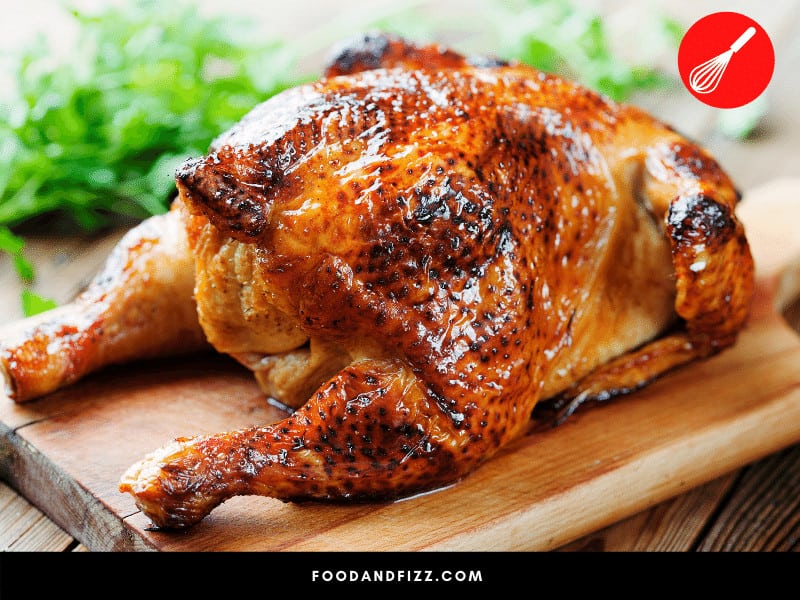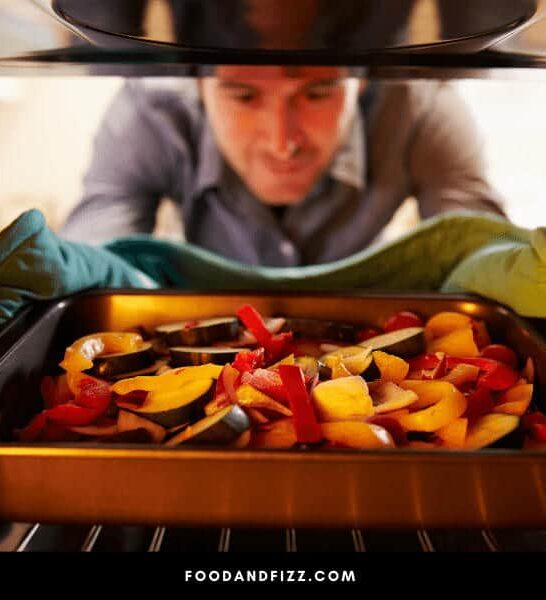Ovens are great for cooking all kinds of dishes. They are even capable of different kinds of cooking.
For instance, you can choose to broil or roast the food you have inside the oven. How do broiling and roasting differ from one another? You can learn the answer to that question by reading on.
Is Broiling the Same as Roasting?
Broiling and roasting are two distinct cooking techniques. Roasting involves cooking at temperatures consistently above 300 degrees Fahrenheit and heating the food from all sides. On the other hand, broiling takes place at over 500 degrees Fahrenheit and the heat only comes from above. The roasting process also tends to take more time compared to broiling.

What Is Roasting?
To better understand the differences between broiling and roasting, it helps to first discuss them separately. Let’s start with roasting.
Roasting is a technique that utilizes hot air to cook food.
Typically, roasting involves cranking the temperature of the oven up to 300 degrees Fahrenheit or around 189 degrees Celsius. You can go all the way up to around 450 degrees Fahrenheit to roast food.
The goals of roasting are simple.
First off, roasting is great for keeping food moist even as it endures prolonged exposure to the hot, dry air. By keeping the oven temperature relatively low for a while, you can cook food for a long time without drying it out.
Near the end, you can raise the temperature of your oven to brown your food and create a crisp texture. Many roasting recipes even indicate how long you have to cook foods at certain temperatures.
Roasting also appeals to many home cooks because it’s pretty simple. Once you place the food inside the oven, you don’t have to worry about it again until it’s time to turn up the heat.
Even turning is not necessary when you’re roasting something. The food you’re roasting will cook evenly without you moving it because the hot air is coming from all sides.
Despite how simple the process is, you still cannot abandon your roast. However, you can do some things nearby while you wait for it to cook.
How Does the Flavor of Roasted Food Develop?
If you want to develop complex flavors in your food, then roasting is definitely the way to go.
When you roast something, you can effectively caramelize its natural sugars without burning it. That’s why roasted meats feature such remarkable flavors.

Aside from the savory taste of the meat, you’re also getting a hint of the sweetness it naturally possesses. It’s not just meat that benefits from the roasting process.
Fruits and vegetables can also develop new flavor profiles after being roasted. Even if you’re not particularly fond of certain vegetables, your opinion of them may change after you’ve tasted them post-roasting.

What Is Broiling?
Now that we’ve talked about roasting at length, we can turn our attention to broiling.
According to the Food Network, broiling is kind of like inverted grilling.
In grilling, the heat comes from underneath the food. When you’re broiling, the heat approaches the food from above.

The process of broiling also takes place at higher temperatures. Your oven should be operating at 500 degrees Fahrenheit (260 degrees Celsius) at least if you want to broil something properly.
Note that you can only use a specific part of your oven for broiling. More often than not, you will find that dedicated broiler near the top of the oven.
The purpose of broiling food is to make it crispy. You want to use that high heat to crisp up the surface of the item you’re broiling.
Cuts of meat with substantial layers of skin such as chicken thighs and pork bellies may be finished in the broiler so they are as crisp as possible before serving. Making cheese and slices of bread crispy is also possible through broiling.
Just remember that broiling has limitations. Its most notable limitation is that you cannot rely solely on broiling to cook different cuts of meat.
Broiling something for an extended period of time will burn it. The food you’re cooking should already be cooked through before you set it under your broiler.
You can only cook something using a broiler if it is sliced very thinly. By slicing the food thin, you can cook it through using the broiler before it starts to burn.

How Does the Flavor of Broiled Food Develop?
Earlier, we mentioned that roasting is one of the best ways to cook your food if you want it to develop a more complex flavor. Can broiling do that?
It can, but you have to be careful when trying to draw out the flavor of food through broiling.
The issue stems from the high temperatures involved. Whatever new flavors you develop through broiling may be wiped away if the food burns.
The burnt flavor is very unpleasant so you want to avoid that.
You can get the delicious char flavor from broiling. Drawing out the sweetness of food is also possible using a broiler.
Broilers are also great to use because they can add texture to your food. A lot of us are fans of crispy skin on meat and you can get that quickly using a broiler.
You can even use a broiler to add the finishing touches to your roasted food instead of just turning the oven temperature up.
Conclusion to Is Roasting the Same as Broiling?
Broiling and roasting are different cooking techniques that can yield fantastic results when done correctly. Use the details included in this article to determine if broiling or roasting makes more sense for your dish.
Frequently Asked Questions About Is Broiling the Same As Roasting?
Can You Broil Fruits and Vegetables without Cooking Them First?
Yes, broiling fruits and vegetables is possible without cooking them beforehand. Just set the fruits and vegetables under the broiler for a short time to caramelize their natural sugars without burning them.
How Do You Stop Food from Drying Out while Roasting?
You can stop roasted food from drying out by keeping the oven temperature relatively low. Basting your roast occasionally will also help keep it nice and moist.

